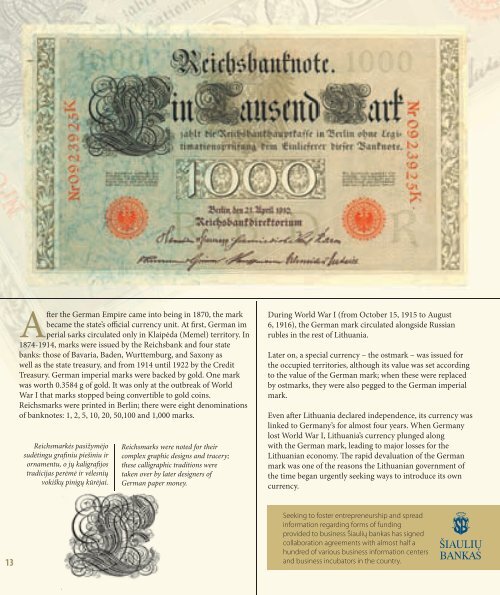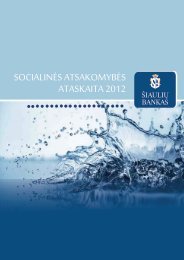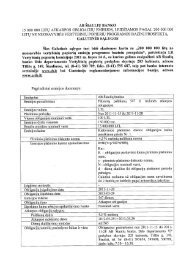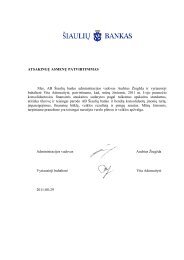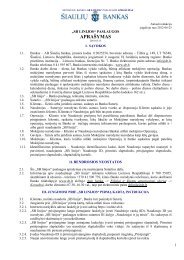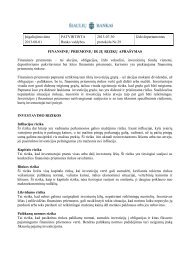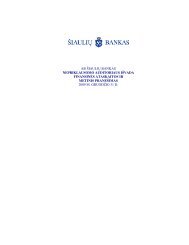Po 1871 m., kai susikūrė Vokietijos imperija, markė ... - Šiaulių bankas
Po 1871 m., kai susikūrė Vokietijos imperija, markė ... - Šiaulių bankas
Po 1871 m., kai susikūrė Vokietijos imperija, markė ... - Šiaulių bankas
Create successful ePaper yourself
Turn your PDF publications into a flip-book with our unique Google optimized e-Paper software.
13<br />
13<br />
A� er the German Empire came into being in 1870, the mark<br />
became the state’s o� cial currency unit. At � rst, German im<br />
perial ьarks circulated only in Klaipėda (Memel) territory. In<br />
1874-1914, marks were issued by the Reichsbank and four state<br />
banks: those of Bavaria, Baden, Wurttemburg, and Saxony as<br />
well as the state treasury, and from 1914 until 1922 by the Credit<br />
Treasury. German imperial marks were backed by gold. One mark<br />
was worth 0.3584 g of gold. It was only at the outbreak of World<br />
War I that marks stopped being convertible to gold coins.<br />
Reichsmarks were printed in Berlin; there were eight denominations<br />
of banknotes: 1, 2, 5, 10, 20, 50,100 and 1,000 marks.<br />
Reichs<strong>markė</strong>s pasižymėjo<br />
sudėtingu gra� niu piešiniu ir<br />
ornamentu, o jų kaligra� jos<br />
tradicijas perėmė ir vėlesnių<br />
vokiškų pinigų kūrėjai.<br />
Reichsmarks were noted for their<br />
complex graphic designs and tracery;<br />
these calligraphic traditions were<br />
taken over by later designers of<br />
German paper money.<br />
During World War I (from October 15, 1915 to August<br />
6, 1916), the German mark circulated alongside Russian<br />
rubles in the rest of Lithuania.<br />
Later on, a special currency – the ostmark – was issued for<br />
the occupied territories, although its value was set according<br />
to the value of the German mark; when these were replaced<br />
by ostmarks, they were also pegged to the German imperial<br />
mark.<br />
Even a� er Lithuania declared independence, its currency was<br />
linked to Germany’s for almost four years. When Germany<br />
lost World War I, Lithuania’s currency plunged along<br />
with the German mark, leading to major losses for the<br />
Lithuanian economy. � e rapid devaluation of the German<br />
mark was one of the reasons the Lithuanian government of<br />
the time began urgently seeking ways to introduce its own<br />
currency.<br />
Seeking to foster entrepreneurship and spread<br />
information regarding forms of funding<br />
provided to business <strong>Šiaulių</strong> <strong>bankas</strong> has signed<br />
collaboration agreements with almost half a<br />
hundred of various business information centers<br />
and business incubators in the country.


